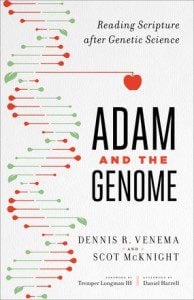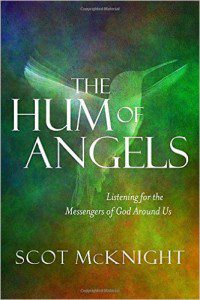 We are praying for Pope Francis, and I hope you are too.
We are praying for Pope Francis, and I hope you are too.
Wonderful post by Ann Voskamp on loving one another. Wonderful. Thanks Ann.
Ed Cyzewski’s pushback on being “biblical”: “There is a holy grail that evangelical Christians have been seeking. It’s a quest that has consumed much time and left many battered believers by the side of the road. I’ve sacrificed my share of time to this pursuit over the years. This is the holy and righteous pursuit of being the most “biblical.” In the evangelical world, if you aren’t “biblical,” then you areclearly influenced by your sinful desires or our evil culture. While “biblical” could technically mean “influenced by the Bible,” it has become a code word for “possessing the one and only way to interpret the Bible on a particular issue.” In our zeal to follow the teachings of scripture, we have sought a definitive, once and for all time way to read a book that has always been a work in progress. In one sense, we all want to be guided and informed by the Bible. However, the pursuit of being biblical more often turns into: “I know God’s definitive and authoritative perspective, you better agree with me, or you’re going to be unbiblical.” If I don’t agree with the “biblical” perspective being presented, then I’ve rejected God’s truth…. I don’t mean to be flip about the Bible. I read it every day. The main point here is that the Bible alone is not going to get the job done apart from the Holy Spirit in our lives. Jesus trusted the Holy Spirit to lead us into all truth, to keep us after he had gone. And while we should not neglect the teachings of scripture, an air tight system of theology does not replace the work of the Spirit among us. There is no “biblical” way of doing things. There is only a biblically informed and Spirit-led way of doing things. And that information and leading may evolve and shift over time.”
Jimmy Mellado to Compassion International.
Good story about Chris Tomlin.
From Adam A. Kline: “Do we dare? Do I dare treat Easter like it’s a party? Do I dare party like it’s 33 A.D.? Like I know we are living in a time that is After. Death. Easter Sunday should be a party, or maybe to put it another way, it’s already a party. The only question is, am I a part of it? Resurrection Sunday should be the biggest party of the year! We should prepare and share the finest food and expect the greatest celebration; but we must not forget that even the most anticipated of Superbowl parties, even the most memorable of Wedding receptions, require a great deal of preparation; maybe even an entire season of it. Resurrection is the single most climactic event in God’s story. The Resurrection was what God’s story was building toward all along and it is the only reason the story continues today. Easter Sunday is the reason we remember, reenact and experience the truth that He lives, to quicken all mankind. Resurrection is the greatest of gifts at the end of a forty-day season of preparation and initiation. Resurrection Sunday is the reason for it all, as the Apostle Paul declared, “Christ has indeed been raised from the dead, the firstfruits of those who have fallen asleep. For since death came through a man, the resurrection of the dead comes also through a man” (1 Corinthians 15:20-21). I desire to be rambunctious for the Resurrection! It is my prayer that my excitement for the Superbowl will pale in comparison to my anticipation of Easter Sunday.”
Power naps are in! Ol’ Tom Edison’d be unsurprised, eh? “ASBURY PARK, N.J. — To help its 20 employees in the office fight through a wave of afternoon fatigue, Nationwide Planning Associates Inc. remodeled an unused closet with a recliner, a fountain and a bamboo rug. Nap time these days isn’t just for preschoolers. Employees of the Paramus, N.J., investment firm sign up for 20-minute blocks of restorative time twice a week and emerge energized, as if hitting the restart button. “I don’t even drink coffee anymore because (after a nap) you don’t need to,” said James Colleary, 27, a compliance principal who helped convince management that a nap room would be worth the investment. “If you take only 20 minutes, you actually feel alert (when you wake up). You feel refreshed.” Confession time: I’m a 10-minute napper; I lean my head against my hand and doze for ten minutes, and I awake ready to go.
Our hometown made it, woot woot!
Meanderings in the News
 Bloomberg’s graph about food costs… on the decline across the board:
Bloomberg’s graph about food costs… on the decline across the board:
David Brooks on Jewish Orthodoxy: “Nationwide, only 21 percent of non-Orthodox Jews between the ages of 18 and 29 are married. But an astounding 71 percent of Orthodox Jews are married at that age. And they are having four and five kids per couple. In the New York City area, for example, the Orthodox make up 32 percent of Jews over all. But the Orthodox make up 61 percent of Jewish children. Because the Orthodox are so fertile, in a few years, they will be the dominant group in New York Jewry.”
See who profits from war: “The business of war is profitable. In 2011, the 100 largest contractors sold $410 billion in arms and military services. Just 10 of those companies sold over $208 billion. Based on a list of the top 100 arms-producing and military services companies in 2011 compiled by the Stockholm International Peace Research Institute (SIPRI), 24/7 Wall St. reviewed the 10 companies with the most military sales worldwide. These companies have benefited tremendously from the growth in military spending in the U.S., which by far has the largest military budget in the world. In 2000, the U.S. defense budget was approximately $312 billion. By 2011, the figure had grown to $712 billion. Arm sales grew alongside general defense spending growth. SIPRI noted that between 2002 and 2011, arms sales among the top 100 companies grew by 51%.
More on Neanderthal demise: “A study of Neanderthal skulls suggests that they became extinct because they had larger eyes than our species. As a result, more of their brains were devoted to seeing in the long, dark nights in Europe, at the expense of high-level processing. By contrast, the larger frontal brain regions of Homo sapiens led to the fashioning of warmer clothes and the development larger social networks.”
This will be cool: “I’m quite literally trying my hand at Leap Motion, the fascinating new motion controller peripheral for PC and Mac computers. Leap ultimately hopes to integrate its technology into computers and tablets. Consumers can get their own hands on, or more accurately above, the Leap Motion Controller that makes all this possible on May 13, when pre-orders ship. (Best Buy is also accepting pre-“orders.) South by Southwest represents the first public showing of the technology. As you hold one or both hands above the controller it senses and tracks your slightest movement or jitter, the company says. The controller can track hands that are about two feet above it or to the side, effectively creating an invisible virtual cone of detection.”
George Weigel sees a rising “evangelical Catholicism”: “Besides Father Robert Barron, which Catholic leaders in the post-Vatican II church are models of preaching for cultural change? Certainly Benedict XVI, who’s arguably the greatest papal preacher since the reign, over 14 centuries ago, of Pope Gregory the Great. Father William Joensen at Loras College in Iowa is another master-preacher. The recently named Cardinal James Harvey is a superb preacher. I could name many more. But let’s also look back at the Church Fathers, whose expository preaching is a model for Catholic homilists today, and let’s not forget that preaching is a form of teaching. Contemporary Catholic liturgists turn pale and start making choking noises when they hear this, and so do many preaching gurus; but that’s too bad. John Chrysostom didn’t tell jokes and funny anecdotes in his homilies: He unpacked the Scriptures through the tradition of the Church. And that’s what Catholic preaching must do more of today. In Evangelical Catholicism, I suggest that deacons, priests, and bishops prepare their homilies with a good Biblical commentary (often Protestant in origin) in one hand, and the Catechism of the Catholic Church in the other, always keeping in mind what they’ve read from the Fathers that day in the Office of Reading in the Liturgy of the Hours, the breviary.”
Samuel G. Freedman, on the shift at Focus on the Family: “COLORADO SPRINGS — One Wednesday afternoon last month, Jim Daly drove a couple of miles from his office at Focus on the Family to a classroom building on the University of Colorado’s local campus. Short as the trip was, it carried Mr. Daly beyond his theological and political comfort zone. Such disorientation was the whole point. As the president and chief executive of Focus on the Family, Mr. Daly oversees a Christian ministry with an annual budget of $98 million, a paid staff of 655 and a fervently conservative view of the Bible and American social issues. Seated beside a philosophy professor at the university, Mr. Daly faced an audience of about 125 students and faculty members, some carrying protest signs: “Focus Isn’t My Family,” “No H8,” “Lez Be Honest Who Am I Hurting by Loving a Girl.” For the next hour, through alternating moments of contrition and contention, Mr. Daly continued what has been the signal initiative of his term at the evangelical group: transforming an organization associated with the divisive strife of the culture wars into one that invites civil dialogue with its religious and ideological foes.”
MOOCs: “But what MOOCs may not do is lower the costs of higher ed. In fact, an argument could be made the the rise of the MOOCs will put new cost pressures on institutions, introducing new expenses over and beyond the direct cost of producing and delivering a MOOC. These additional costs incurred by the MOOC movement may show up in higher tuition prices. How could this be? Doesn’t the emergence of free courses provide new opportunities for both individual learners and institutions to lower the acquisition costs of learning? Won’t colleges and universities be able to reduce the costs of offering some courses by utilizing the content and materials from a free MOOC, paying for teaching assistants and exams rather than professors? How could something that is free end up costing us more? The key to understanding why individual MOOCs may eventually drive up costs is to grasp how innovations in one area can raise expectations, and standards, across an entire system.”











